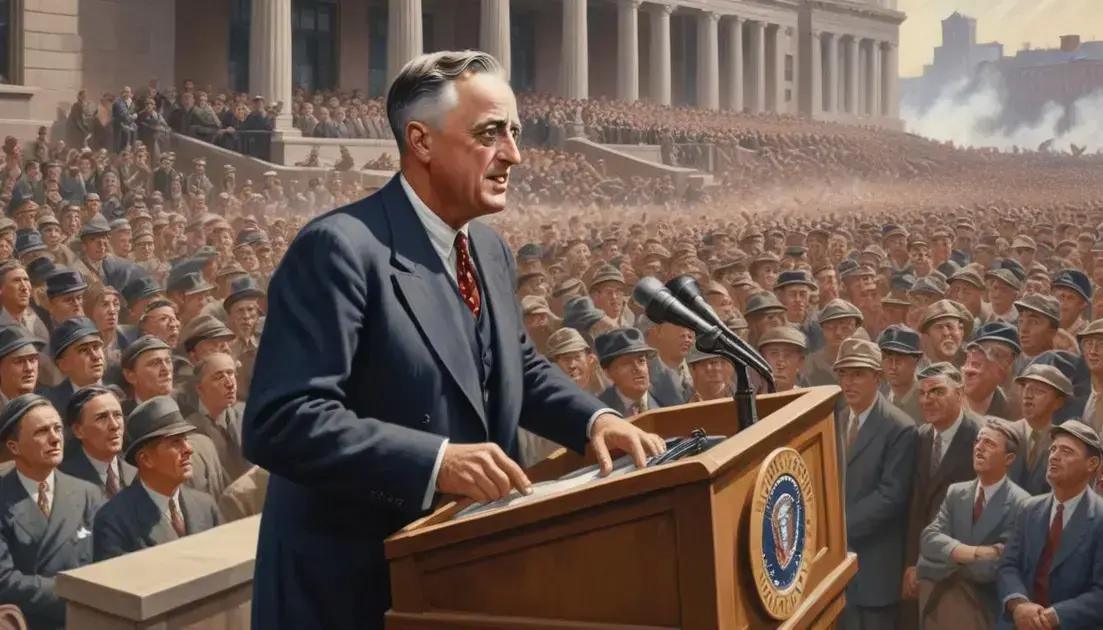
Berlin Wall: The Symbol of World Division
The Berlin Wall symbolizes division and reunification in Germany, marking significant historical events from its construction in 1961 to its fall in 1989. This iconic structure not only represented the Cold War’s ideological struggles but also inspired culture through art, music, and literature. Today, memorials commemorate those affected by the wall and reflect on the importance of freedom and unity, making its legacy crucial for understanding modern history and global politics.
Have you ever thought about the Berlin Wall and its impact on history? This iconic structure not only divided a city but also represented a broader ideological clash. Join us as we explore its legacy.
The history of the Berlin Wall
The Berlin Wall was built in 1961, separating East and West Berlin. It was a concrete symbol of the Cold War. Its purpose was to prevent East Germans from fleeing to the West.
People were desperate to escape. Many tried to cross the border, risking their lives. The wall was heavily guarded, and escape attempts were often met with deadly force.
Over the years, the wall became a site for protests and demonstrations. Artists painted murals on it, turning it into a canvas for freedom. These artworks expressed the longing for reunification.
In 1989, as tensions eased, the wall’s gates were opened. Citizens from both sides gathered to celebrate. It was a moment of joy and relief, marking the end of division.
The fall of the Berlin Wall had a global impact. It symbolized the end of the Cold War and the spread of democracy in Eastern Europe. Today, remnants of the wall stand as a reminder of its history and the struggle for freedom.
Impact on global politics
The Berlin Wall significantly affected global politics. Its rise marked the start of a divided Europe. It became a powerful symbol of the Cold War struggle between capitalism and communism.
Countries around the world watched closely. The wall represented a clear division between East and West. It affected alliances, trade, and military strategies.
Leaders used the wall to enhance their narratives. In the West, it showed the dangers of communism. In the East, it was a measure of control over the population.
As tensions rose, international relations shifted. Countries made decisions based on the wall’s presence. Many nations supported the East or the West, influencing their foreign policies.
The wall’s eventual fall in 1989 marked a turning point. It demonstrated that people could reclaim freedom. This event inspired political movements and led to the reunification of Germany, reshaping Europe.
The impact of the Berlin Wall still resonates today. The lessons learned from this period continue to influence political discourse. Nations reflect on the importance of unity and the dangers of division.
Reunification and its significance
Reunification of Germany was a historic moment. It happened on October 3, 1990. The Berlin Wall fell in 1989, paving the way for this change.
People from both East and West celebrated together. They embraced a new future free from division. This was a powerful symbol of hope.
Reunification led to many changes. Economically, it boosted growth and created jobs. East Germany received support to rebuild its infrastructure and industry.
Socially, families were reunited. Many had been separated for decades. This brought back the sense of community and shared culture.
The significance of reunification extended beyond Germany. It influenced Europe as a whole. Other Eastern European countries followed suit, leading to the collapse of communist regimes.
This event reshaped international relations. Germany emerged as a strong, unified nation. It played a crucial role in promoting democracy and stability in Europe.
The reunification is a reminder of the strength of unity. It shows how people can overcome barriers and strive for freedom together.
Cultural representations of the Wall
The Berlin Wall has inspired many cultural expressions. Artists and writers have used it as a symbol of division and hope. These representations reflect people’s feelings during that time.
One famous example is the murals on the wall. Artists painted colorful images that expressed longing for freedom. These artworks became global symbols of resistance.
Music also played a significant role. Songs about the Berlin Wall conveyed deep emotions. They talked about loss, separation, and the desire for unity.
Films and documentaries showcased the wall’s impact on lives. These stories helped many understand its significance. People related to the struggles depicted in these narratives.
Even now, the Berlin Wall’s legacy continues in pop culture. It remains a powerful symbol of overcoming challenges. Artists regularly use it to remind us of the fight for freedom.
Cultural representations of the wall are vital. They show how art and stories can influence understanding. This helps keep the memory of the wall alive for future generations.
Memorialization and remembrance
Memorialization of the Berlin Wall is essential for remembering its history. The wall stands as a symbol of division and resilience. People visit to honor those who suffered under its shadow.
One key site is the Berlin Wall Memorial. It offers a place for reflection and education. Visitors can learn about the wall’s history and its impact on families.
Another important aspect is the preservation of the wall’s remains. Sections of the wall still exist as reminders of the past. They serve as open-air museums, showcasing art and stories.
Annual events commemorate the fall of the wall. These gatherings celebrate freedom and unity. They bring people together to reflect on the lessons learned.
Documentaries and books also play a role in remembrance. They share personal narratives of those who experienced life before the wall fell. These stories keep the memories alive for future generations.
By memorializing the Berlin Wall, we honor the fight for freedom. It reminds us of the importance of standing against oppression. This collective memory helps guide the values we hold today.
Conclusion
In conclusion, the Berlin Wall stands as a powerful reminder of division and resilience. Its impact resonates not just in Germany, but around the world. The history of the wall teaches us about the importance of freedom and unity.
From the cultural representations to the memorials, we continue to remember the stories of those affected. The reunification of Germany is a symbol of hope and the possibility of overcoming great challenges.
As we reflect on this history, it is crucial to honor those who fought for their freedom. By remembering the past, we can appreciate our present and work towards a better future. The lessons from the Berlin Wall remind us that freedom is worth protecting and celebrating.


